How to survive a nuclear attack: A Comprehensive, Step-by-Step Approach to Outlive the Unthinkable
In an increasingly uncertain world, the possibility of a nuclear attack, while remote, is a terrifying prospect that cannot be completely ruled out. To survive the unthinkable, it’s essential to be prepared, knowledgeable, and ready to act. So how to survive a nuclear attack? In this beginner’s guide, we’ll provide you with practical, life-saving information on how to survive a nuclear attack. We’ll cover everything from understanding the threats and initial steps to take, to long-term survival and recovery.
1. Understanding the Threat – Nuclear Weapons and Their Effects
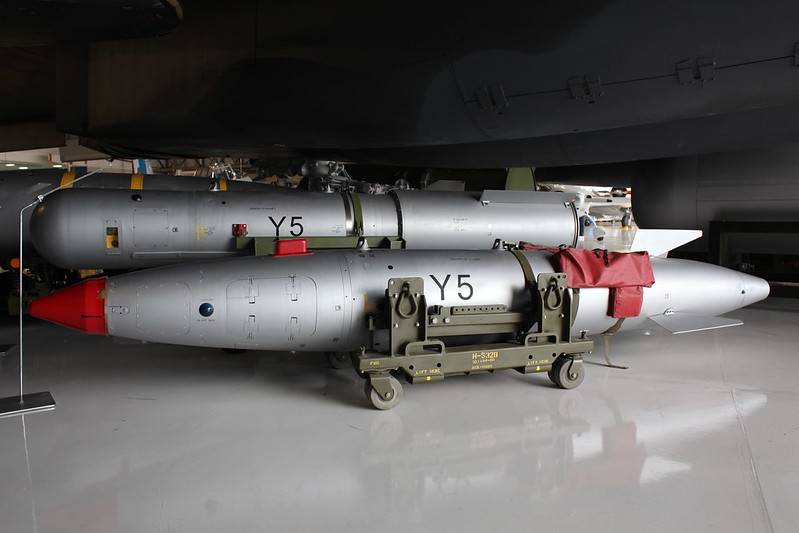
To survive a nuclear attack, it’s essential to understand the types of nuclear weapons and the devastating effects they can have. In this section, we’ll explore the different types of nuclear weapons and the primary consequences of their detonation.
1.1. Types of Nuclear Weapons: Fission vs. Fusion Bombs
Nuclear weapons can be classified into two main categories: fission bombs and fusion bombs. Fission bombs, also known as atomic bombs, rely on the process of nuclear fission, in which the nucleus of an atom is split into smaller parts, releasing a massive amount of energy. The bombings of Hiroshima and Nagasaki in 1945 were carried out with fission bombs.
Fusion bombs, or thermonuclear bombs, are more powerful and complex. They involve both nuclear fission and fusion processes. In a fusion bomb, a fission bomb is used to trigger a fusion reaction, resulting in a much larger explosion. The most well-known fusion bombs are hydrogen bombs.
1.2. Blast and Pressure Effects
The primary effect of a nuclear explosion is the blast wave, characterized by an intense release of energy in the form of a shockwave. The blast wave can cause widespread destruction, flattening buildings and structures within a certain radius, depending on the weapon’s yield. It also generates high winds and pressure changes, which can cause injury or death to those caught in the blast zone as illustrated below.

1.3. Thermal Radiation and Firestorms
Thermal radiation is another immediate effect of a nuclear explosion. The heat released during the explosion can cause severe burns and ignite fires over a wide area. In some cases, the fires may merge into a firestorm, creating a deadly and fast-moving inferno that can consume everything in its path.
1.4. Electromagnetic Pulse (EMP) Effects
A nuclear explosion generates an electromagnetic pulse (EMP), which can cause widespread damage to electrical and electronic systems, including power grids, communication networks, and electronic devices. An EMP can result in long-term power outages and cripple infrastructure, exacerbating the already dire situation following a nuclear attack. This article shows you how to protect yourself from EMPs.
1.5. Fallout and Radiation Sickness
One of the most dangerous and long-lasting effects of a nuclear explosion is radioactive fallout. Fallout is the mixture of dust, debris, and radioactive particles that are ejected into the atmosphere during a nuclear explosion and then fall back to the ground. Exposure to radioactive fallout can cause radiation sickness, which may result in symptoms such as nausea, vomiting, fatigue, and hair loss. Prolonged exposure to high levels of radiation can be fatal.
Understanding the various effects of a nuclear explosion is crucial for developing a survival plan. In the following sections, we’ll discuss how to prepare for and mitigate the risks associated with each of these threats.
2. Preparing for the Unthinkable – Essential Steps to Take Now
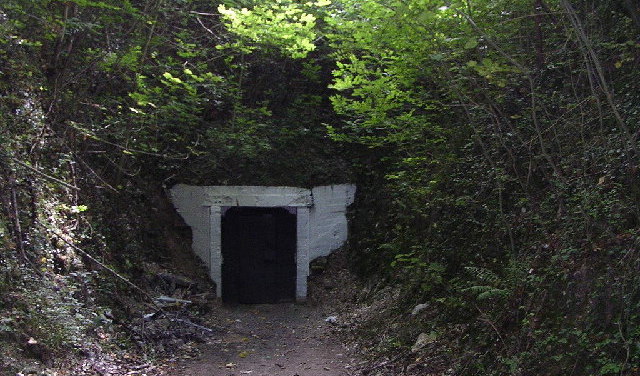
Being prepared for a nuclear attack can significantly increase your chances of survival. In this section, we’ll discuss the crucial steps you can take now to be better prepared to know how to survive a nuclear attack.
2.1. Educate Yourself and Your Family
Start by educating yourself and your family about the risks and effects of a nuclear attack. Learn about the different types of weapons, their potential impact, and the basic principles of radiation protection. Knowledge is power, and understanding the nature of the threat will help you make informed decisions when faced with a nuclear event.
2.2. Develop a Family Emergency Plan
Create a comprehensive family emergency plan that covers various disaster scenarios, including a nuclear attack. Discuss the plan with your family members and practice it regularly. Your plan should include:
- Designated meeting points in case you get separated
- Emergency contact information
- Evacuation routes and potential shelters
- A communication plan for staying in touch with loved ones
Use this tool to know to which degrees you will be affected by a nuclear blast.
2.3. Stock Up on Essential Supplies
Assemble a well-stocked emergency kit that includes enough food, water, and other supplies to last for at least two weeks. Key items to include are:
- Non-perishable food items and a manual can opener
- Water (one gallon per person per day)
- First aid supplies
- A battery-powered or hand-crank radio for receiving emergency broadcasts
- Flashlights and extra batteries
- Personal hygiene items
- A multi-tool or Swiss Army knife
- Dust masks and protective clothing
- Potassium iodide tablets to help protect against radiation exposure
2.4. Create a Safe Room or Shelter
Identify the best location in your home to serve as a safe room or fallout shelter. This should be a space with as much distance and shielding as possible from the exterior walls and roof. Basements, interior rooms, or even large closets can be suitable options. If possible, reinforce this area with additional shielding materials, such as sandbags or concrete blocks.
2.5. Know Your Community’s Plans on how to survive a nuclear attack
Familiarize yourself with your community’s emergency plans, warning systems, and evacuation routes. This information can usually be found on your local government’s website or by contacting your local emergency management office. In the event of a nuclear attack, following established evacuation routes and protocols can help you avoid traffic jams and other obstacles, increasing your chances of reaching safety.
By taking these essential steps now, you’ll be better prepared to face a nuclear attack and protect yourself and your family. Remember, preparedness is key, and having a well-thought-out plan can make all the difference in a life-or-death situation.
3. When Disaster Strikes – Immediate Actions to Take During a Nuclear Attack
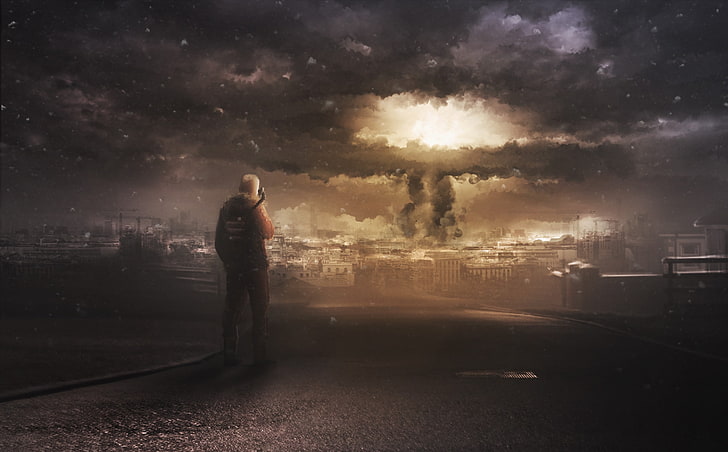
The moments during a nuclear attack are critical, and knowing exactly what to do can make all the difference. In this section, we’ll cover the essential actions to take when disaster strikes.
3.1. Seek Shelter Immediately
If you receive a warning of an impending nuclear attack or notice a bright flash of light (indicating a detonation), seek shelter immediately. The best option is a pre-prepared fallout shelter or safe room. If that’s not available, go to the basement or an interior room of a building, putting as much concrete, brick, or earth between you and the outside as possible. Avoid windows and stay away from exterior walls, as these offer minimal protection from the blast and radiation.
3.2. Tune in to Emergency Broadcasts
As soon as you are in a safe location, use a battery-powered or hand-crank radio to tune in to emergency broadcasts. Local authorities will provide vital information on the situation, including instructions on when it’s safe to leave your shelter, potential evacuation routes, and the location of emergency services. Listening to the radio in these moment can help you with crucial information on how to survive a nuclear attack.
3.3. Protect Yourself from Fallout
Fallout is one of the most dangerous aspects of a nuclear attack. To protect yourself from radioactive particles, follow these principles:
- Time: Limit your exposure to fallout by staying in your shelter for as long as possible. The radiation levels decrease significantly over time.
- Distance: The farther you are from the source of radiation (i.e., the fallout), the lower your exposure.
- Shielding: Dense materials, such as concrete, brick, or earth, provide the best protection against radiation.
Wear long sleeves, pants, and sturdy shoes to cover your skin, and use a dust mask or cloth to cover your nose and mouth.
3.4. Stay Put Until It’s Safe to Move
Remain in your shelter for at least 48 hours, or until local authorities say it’s safe to leave. Leaving too early can expose you to dangerous levels of radiation. Be patient and stay informed by regularly checking emergency broadcasts.
3.5. Begin Rationing Your Supplies
As soon as you’re in your shelter, begin rationing your food, water, and other essential supplies. You may need to survive in your shelter for an extended period, so it’s crucial to conserve your resources. Prioritize your needs and ration accordingly.
By following these immediate actions during a nuclear attack, you can significantly increase your chances of survival. The key is to stay calm, act quickly, and follow the advice of emergency responders.
4. After the Dust Settles – Navigating the Post-Attack Landscape

The days, weeks, and months following a nuclear attack will be fraught with danger and uncertainty. In this section, we’ll provide guidance on how to navigate this new, post-apocalyptic world.
4.1. Assess Your Situation and Prioritize Needs
Once it’s safe to leave your shelter, assess your immediate situation. Prioritize your needs, focusing on the most critical aspects, such as finding clean water, food, and medical attention if necessary. Be prepared to make difficult decisions and adapt to the new reality.
4.2. Monitor Radiation Levels
Keep track of radiation levels in your area using a Geiger counter or dosimeter, if available. This will help you determine the safest areas to move through and avoid dangerous hotspots. Remember the principles of time, distance, and shielding to minimize your exposure to radiation.
4.3. Stay Informed and Follow Official Guidance
Continue to monitor emergency broadcasts and follow the guidance provided by local authorities. They will have the most up-to-date information on the situation and may direct you to relief centers or other resources.
4.4. Be Cautious of Contaminated Food and Water
In the aftermath of a nuclear attack, food and water sources may be contaminated with radioactive particles. Avoid consuming food or water that has been exposed to fallout. If you must use these sources, follow proper decontamination procedures, such as washing fruits and vegetables with clean water, or filtering and boiling water before drinking.
4.5. Practice Safe Sanitation and Hygiene
Maintaining proper sanitation and hygiene is crucial to avoid illness and infection. Dispose of human waste in a designated area, away from living spaces and water sources. Wash your hands regularly, especially before eating or handling food, and ensure that your living area is kept clean and organized.
By following these guidelines and staying vigilant, you can better navigate the post-attack landscape and minimize the risks to your health and safety. Remember, the world has changed, and you must adapt to survive in this new reality.
5. how to survive a nuclear attack in the Long Haul – Rebuilding and Recovery
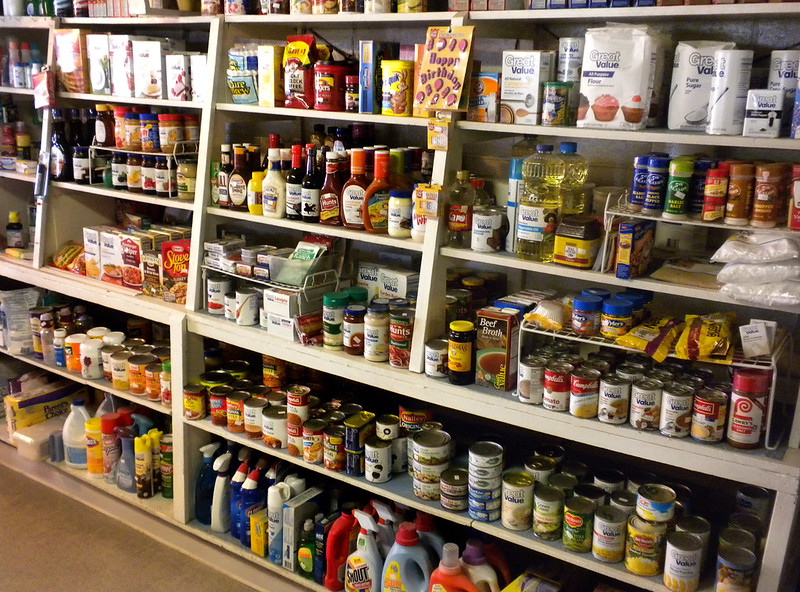
Knowing how to survive a nuclear attack doesn’t end when the immediate threat is over. In this section, we’ll discuss long-term strategies for rebuilding and recovery in the aftermath of a nuclear attack.
5.1. Establish a Sustainable Food and Water Supply
Securing a sustainable source of food and water is essential for long-term survival. Cultivate a garden, if possible, to grow vegetables and other edible plants. Set up rainwater collection systems, and purify water from nearby sources using filtration and boiling methods. Consider forming alliances with other survivors to pool resources and create a more resilient community.
5.2. Develop a Long-Term Shelter Solution
Your initial shelter may not be suitable for long-term habitation. Assess your current living situation and determine whether improvements or a relocation are necessary. Look for a structurally sound building or a natural shelter, such as a cave or underground space. Make sure your shelter provides adequate protection from the elements, as well as potential security threats.
5.3. Maintain a Strong Community and Network
Forming and maintaining a strong community is crucial for long-term survival. Connect with other survivors, share resources, and work together to rebuild your lives. Establish a communication network to exchange information and stay informed about the ongoing situation.
5.4. Focus on Health and Wellness
Take care of your physical and mental health. Maintain a balanced diet, exercise regularly, and get enough rest. Address any medical issues promptly and make use of available resources to maintain your well-being. Don’t neglect your mental health – stay connected with loved ones, engage in hobbies or creative activities, and seek support from others when needed.
5.5. Adapt and Overcome New Challenges
The post-attack world will present new challenges that you must be prepared to face. Be adaptable and willing to learn new skills, whether it’s basic medical care, farming, or self-defense. The more versatile you are, the better equipped you will be to handle the challenges that come your way.
By focusing on these long-term strategies, you can begin the process of rebuilding and recovery, and ultimately create a more stable and resilient future for yourself and your community. Remember, survival is an ongoing process, and your ability to adapt and persevere will be the key to your success.
6. Building a More Resilient Future – Lessons Learned and Actions for a Safer World
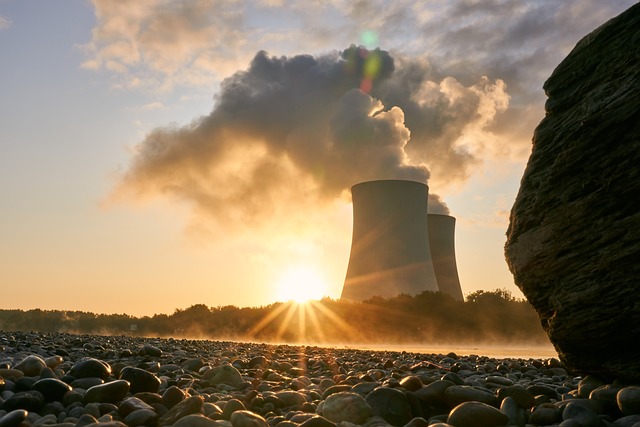
The aftermath of a nuclear attack offers an opportunity to learn from the experience and take action to build a more resilient future. In this section, we’ll explore several key lessons from surviving a nuclear attack and discuss how to apply them to create a safer world.
6.1. Advocate for a Nuclear-Free World
Raise awareness about the devastating consequences of nuclear weapons and support efforts to promote nuclear disarmament and non-proliferation. Encourage your government to engage in diplomatic efforts to reduce the risk of nuclear conflict and work towards a world free of nuclear weapons.
6.2. Invest in Community Preparedness and Resilience
Promote the importance of community preparedness and resilience at the local, regional, and national levels. Encourage investment in disaster preparedness, emergency management, and infrastructure improvements that can help mitigate the impact of future disasters, including nuclear attacks.
6.3. Strengthen International Collaboration and Diplomacy
Support initiatives that foster international collaboration and diplomacy in addressing global challenges, including the threat of nuclear conflict. Encourage dialogue and cooperation among nations to develop shared solutions to common problems, fostering a more stable and secure world.
6.4. Foster a Culture of Preparedness and Self-Reliance
Emphasize the importance of individual and community preparedness in the face of disasters, both natural and man-made. Encourage people to develop the skills and knowledge necessary to respond effectively to emergencies, fostering a culture of self-reliance and resilience.
6.5. Learn from the Past and Innovate for the Future
Apply the lessons learned from surviving a nuclear attack to develop innovative solutions for a safer, more resilient future. Invest in research and development to create new technologies, strategies, and policies that can help prevent, mitigate, and recover from future disasters.
By embracing these lessons and taking action, we can work together to build a more resilient future and reduce the risk of nuclear conflict. The path to a safer world begins with each of us. Learn how to survive a nuclear attack and take the actions today that can shape the course of history for generations to come.






